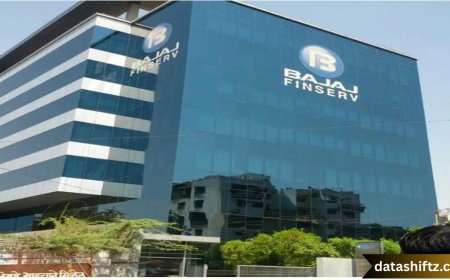YES Bank Share News: Key Developments and Market Outlook (May 2025)
YES Bank, one of India's prominent private-sector banks, has been in the spotlight recently due to significant developments affecting its stock performance and future prospects. This article delves into the latest news surrounding YES Bank's share price, strategic initiatives, and market outlook as of May 2025.
Recent Developments Impacting YES Bank's Share Price
1. Strategic Stake Acquisition by SMBC
A major highlight is the ongoing discussions between Sumitomo Mitsui Banking Corporation (SMBC) and YES Bank. SMBC, Japan's second-largest bank, is reportedly in advanced talks to acquire a stake in YES Bank, potentially triggering an open offer for an additional 26% of the private lender . This move is seen as a strategic step towards strengthening YES Bank's capital base and expanding its international presence.
2. Financial Performance and Market Sentiment
In the first quarter of FY 2025, YES Bank reported a 15% year-on-year growth in loans and advances, reaching ₹2.29 lakh crore. Deposits grew by 21% to ₹2.64 lakh crore during the same period. The bank's net interest margin (NIM) remained steady at 2.4%, and it reported a significant 123% year-on-year surge in profit to ₹452 crore .
Despite these positive financial indicators, market analysts have mixed sentiments. While some analysts maintain a 'Hold' rating, others suggest a cautious approach due to potential market volatility and internal challenges.
Factors Influencing YES Bank's Share Price
1. Ownership Structure and Institutional Support
As of the latest reports, the State Bank of India (SBI) holds a 23.99% stake in YES Bank, making it the largest shareholder. Other significant investors include Verventa Holdings (Advent) with 9.2%, and CA Basque Investments (Carlyle) with 6.84%. These institutional investors have played a crucial role in stabilizing the bank's financial position following the 2020 restructuring .
2. Asset Quality and Loan Portfolio
YES Bank has made notable progress in improving its asset quality. The gross non-performing assets (NPA) ratio has decreased to 1.60%, and the net NPA ratio stands at 0.50%. This improvement reflects the bank's effective risk management strategies and efforts to clean up its balance sheet .
3. Digital Transformation Initiatives
In line with industry trends, YES Bank is investing in digital transformation to enhance customer experience and operational efficiency. The introduction of digital products like YES ROBOT, YES PAY, and YES SECURE, along with partnerships with fintech giants such as PhonePe and Amazon Pay, underscores its commitment to innovation and customer acquisition .
Analyst Perspectives and Share Price Outlook
Analysts have varied perspectives on YES Bank's stock performance. Some technical analysts suggest a positive outlook, recommending a buy with a target price of ₹31, citing favorable chart patterns and momentum indicators . However, others advise caution, highlighting potential risks associated with market fluctuations and internal challenges.
The consensus among analysts indicates a 'Hold' rating, with a median price target of ₹17, suggesting limited upside in the short term .
YES Bank Share Price Forecast (2025–2030)
Based on current trends and strategic initiatives, here's a projected outlook for YES Bank's share price:
| Year | Projected Share Price (₹) |
|---|---|
| 2025 | 32 – 48 |
| 2026 | 40 – 65 |
| 2027 | 50 – 80 |
| 2028 | 60 – 100 |
| 2029 | 75 – 120 |
| 2030 | 90 – 150 |
These projections are based on factors such as loan book growth, asset quality improvement, and digital transformation initiatives. However, it's important to note that market conditions and external factors can influence these projections.
Conclusion
YES Bank is navigating a transformative phase, with strategic initiatives aimed at strengthening its financial position and expanding its market presence. While the bank's recent financial performance and digital transformation efforts are promising, investors should remain cautious and consider both the opportunities and risks associated with the banking sector. Continuous monitoring of market trends and the bank's performance will be essential for making informed investment decisions.





























